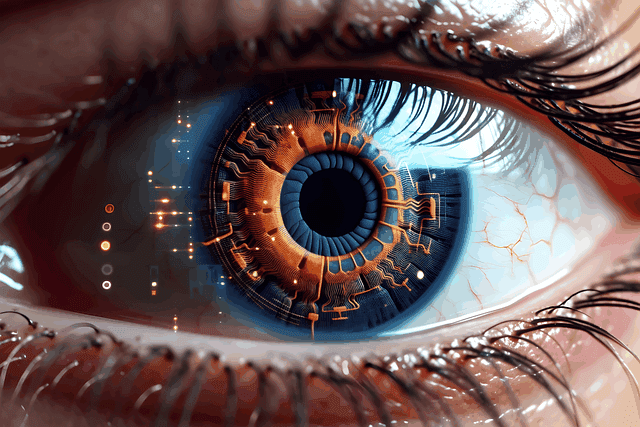In recent years, artificial intelligence has surged in popularity, thanks largely to advancements in deep learning vs machine learning. While both fields are integral to AI, they differ in approach, application, and underlying technology. If you’ve been wondering about the distinction between these two, this article is designed to break down the key differences, helping you better understand where and when each technology is used.
Introduction: Deep Learning vs Machine Learning
At the core of artificial intelligence, deep learning vs machine learning represents two distinct but related approaches to solving complex problems. Machine learning is a broader concept where algorithms learn from data patterns without explicit programming, while deep learning, a subset of machine learning, involves neural networks that mimic the human brain’s structure, learning from vast datasets through layers of computation.
Understanding deep learning vs machine learning is essential in industries ranging from healthcare to finance, where these technologies power predictive models, image recognition, language processing, and more. Let’s explore the unique aspects of each, diving into how these technologies differ in methodology, use cases, and scalability.
The Basics of Machine Learning
Machine learning (ML) is a branch of artificial intelligence that focuses on building systems capable of learning and improving from experience. Machine learning algorithms analyze data, identify patterns, and make decisions with minimal human intervention. These models can range from simple linear regression to complex algorithms like random forests or support vector machines. However, unlike deep learning, traditional machine learning requires feature engineering, where specific data attributes are pre-selected for training.
In the deep learning vs machine learning debate, ML is often favored for tasks that involve structured data, such as tabular information, where predefined inputs and outputs make it easier for algorithms to identify trends and anomalies.
Types of Machine Learning
Supervised Learning: In this approach, the model is trained on labeled data. The algorithm learns to map input data to the desired output based on the examples it is provided. Applications include classification tasks (like spam detection) and regression tasks (like predicting prices).
Unsupervised Learning: Here, the algorithm is given unlabeled data and must find patterns and relationships on its own. Common techniques include clustering and dimensionality reduction, useful for market segmentation and data visualization.
Semi-Supervised Learning: This method combines both labeled and unlabeled data, using the strengths of both supervised and unsupervised learning. It is particularly effective when obtaining labeled data is expensive or time-consuming.
Reinforcement Learning: In reinforcement learning, agents learn to make decisions by receiving rewards or penalties based on their actions in an environment. This approach is widely used in robotics and game development.
The Foundations of Deep Learning
Deep learning (DL) is a specialized area within machine learning that leverages artificial neural networks (ANNs) to process vast amounts of unstructured data. The main difference in deep learning vs machine learning is that deep learning doesn’t require feature engineering; instead, neural networks automatically learn representations from raw data.
Deep learning architectures, such as convolutional neural networks (CNNs) and recurrent neural networks (RNNs), make it possible to handle complex data types, like images, audio, and text. With its multilayered approach, deep learning can process data in ways that traditional ML cannot, extracting complex patterns through computational layers that mimic human cognition.
Types of Deep Learning Architectures
Convolutional Neural Networks (CNNs): Primarily used in image processing, CNNs are designed to automatically and adaptively learn spatial hierarchies of features from images. They excel in tasks such as image classification, object detection, and segmentation.
Recurrent Neural Networks (RNNs): RNNs are designed for sequential data, making them ideal for applications involving time series data or natural language processing (NLP). They maintain memory of previous inputs, allowing them to understand context in sequences.
Long Short-Term Memory (LSTM) Networks: A special kind of RNN, LSTMs are capable of learning long-term dependencies, making them effective for tasks such as speech recognition and language modeling.
Generative Adversarial Networks (GANs): GANs consist of two neural networks—a generator and a discriminator—that compete against each other. This architecture is popular for generating realistic images, videos, and audio.
Key Differences Between Deep Learning and Machine Learning
To better understand deep learning vs machine learning, let’s examine some of the critical distinctions between these technologies.
1. Data Requirements in Deep Learning vs Machine Learning
Machine learning generally requires smaller datasets to achieve reliable performance. Most ML algorithms can deliver accurate predictions with limited data, provided that it’s structured and well-labeled. Deep learning, however, requires massive datasets to train effectively, as neural networks need extensive examples to identify intricate patterns.
This is particularly important in industries where data collection can be limited. For example, in niche healthcare applications, traditional machine learning might be preferred over deep learning due to a lack of large, labeled datasets.
2. Feature Engineering Differences
A major difference in deep learning vs machine learning is the need for feature engineering. Machine learning relies heavily on domain expertise to identify the most relevant features, while deep learning bypasses this requirement by allowing neural networks to learn features automatically.
The absence of feature engineering in deep learning enables faster development cycles, as practitioners don’t need to manually define attributes. This makes deep learning a powerful tool for applications where relevant features are challenging to determine.
3. Training Time and Computational Power
Machine learning models are generally faster to train and require less computational power, making them ideal for applications that demand quick results with limited resources. Deep learning, by contrast, involves substantial processing power, often necessitating GPUs or TPUs to handle the intensive computations required by neural networks.
In the deep learning vs machine learning discussion, this makes DL more resource-intensive and time-consuming to train, but often more accurate for complex tasks once models are operational.
4. Interpretability of Models
Interpretability is a crucial factor when considering deep learning vs machine learning. Machine learning models, such as decision trees and linear regression, are generally more interpretable, making it easier to understand how predictions are made. This transparency is valuable in fields like finance and healthcare, where understanding the reasoning behind decisions is critical.
Deep learning models, however, function as “black boxes” due to their complex structure and multiple layers. This makes it challenging to interpret specific predictions, posing limitations in sectors where model explainability is essential.
5. Application Areas
The difference in deep learning vs machine learning applications is primarily driven by the type of data and the complexity of the tasks involved. Machine learning is ideal for tasks involving structured data, such as customer segmentation, fraud detection, and predictive maintenance.
Deep learning, on the other hand, excels at handling unstructured data types, such as image recognition, speech processing, and natural language understanding. As a result, industries like computer vision, audio processing, and robotics frequently utilize deep learning models for intricate tasks requiring high accuracy.
Deep Learning vs Machine Learning: Use Cases
Machine Learning Use Cases
Predictive Analytics: In retail and e-commerce, machine learning algorithms predict consumer behavior, aiding in inventory management and targeted advertising. For instance, Amazon uses ML algorithms to recommend products based on customer browsing history.
Fraud Detection: Financial institutions use machine learning to identify unusual patterns in transactions, reducing fraud risks. Algorithms analyze historical transaction data to flag suspicious activities, helping banks take proactive measures.
Customer Segmentation: Marketing teams employ ML to categorize customer bases, allowing for personalized engagement strategies. By analyzing purchasing behavior and demographic data, businesses can tailor their marketing efforts effectively.
Recommendation Systems: Streaming services like Netflix and Spotify utilize machine learning algorithms to recommend movies, shows, and music based on user preferences, enhancing the customer experience.
Deep Learning Use Cases
Image and Speech Recognition: Deep learning is the backbone of facial recognition technology, autonomous driving systems, and speech-to-text applications. For example, companies like Google and Apple leverage deep learning for their virtual assistants to improve voice recognition accuracy.
Natural Language Processing (NLP): NLP applications in chatbots, translation services, and virtual assistants are largely powered by deep learning. This technology allows machines to understand and generate human language, enabling more sophisticated interactions.
Medical Imaging: Deep learning analyzes medical scans, assisting in early diagnosis and treatment planning for conditions like cancer. Radiologists use deep learning algorithms to identify tumors in X-rays and MRIs, improving diagnostic accuracy.
Generative Models: Deep learning techniques like GANs are used to create realistic images, videos, and music. This capability is not only creative but also finds applications in gaming and virtual reality.
Advantages and Disadvantages of Deep Learning vs Machine Learning
Advantages of Machine Learning
Efficiency with Small Data: Machine learning performs well with smaller datasets, ideal for applications with limited data availability. This advantage allows businesses to implement ML solutions even when data collection is challenging.
Faster Training Times: ML models can be trained relatively quickly and are less computationally expensive. Organizations can iterate and deploy solutions rapidly, keeping up with business needs.
Interpretability: Many machine learning models offer higher transparency, which can be essential for regulatory compliance. For example, in finance, decision trees provide clear paths that explain how decisions are made.
Disadvantages of Machine Learning
Need for Feature Engineering: Machine learning requires domain knowledge to define features, potentially prolonging development. In some cases, feature engineering can introduce bias if not done carefully.
Limited Complexity: For highly complex tasks, traditional machine learning models may fall short in accuracy. In scenarios where the underlying relationships in data are non-linear, ML may not capture these dynamics effectively.
Advantages of Deep Learning
Handling Complex Data: Deep learning shines in processing unstructured data types. For applications requiring nuanced understanding, such as image and speech recognition, deep learning provides superior performance.
Automated Feature Extraction: The ability to learn features directly from data allows for rapid model development, reducing reliance on human expertise for feature selection.
High Accuracy: Deep learning models often achieve higher accuracy in complex tasks due to their depth and ability to model intricate patterns. This is particularly valuable in competitive sectors like finance and healthcare.
Disadvantages of Deep Learning
Data Hungry: Deep learning requires large amounts of labeled data to train effectively, which can be a barrier in domains where data collection is expensive or limited.
Resource Intensive: Training deep learning models demands significant computational power, often requiring specialized hardware like GPUs, which can increase operational costs.
Lack of Interpretability: The complexity of deep learning models can make them difficult to interpret, raising concerns in fields requiring transparency in decision-making processes.
Conclusion: Choosing Between Deep Learning and Machine Learning
In the ongoing discussion of deep learning vs machine learning, the choice between these technologies often depends on the specific use case, data availability, and operational requirements. While traditional machine learning is suitable for tasks involving structured data and smaller datasets, deep learning excels at handling vast amounts of unstructured data, making it ideal for applications in computer vision and natural language processing.
As organizations continue to explore the capabilities of artificial intelligence, understanding the distinctions between deep learning vs machine learning will be vital in selecting the right tools for their needs. By leveraging the strengths of each approach, businesses can unlock the full potential of AI to drive innovation and efficiency in their operations.






